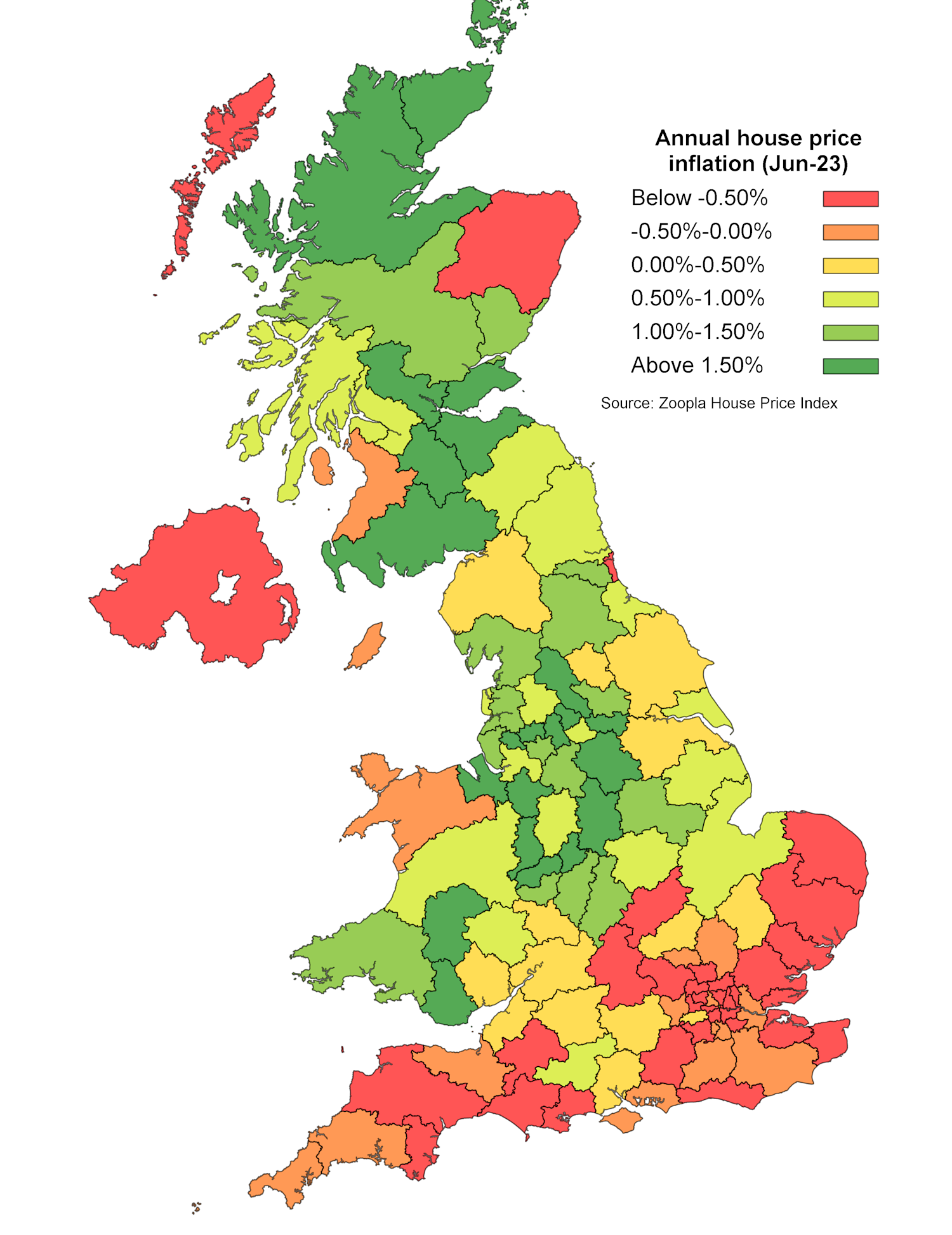The UK base rate continues to increase but mortgage rates are close to peaking.
Base rate up 0.25% – fewer increases expected
The Bank of England has raised rates again to 5.25% in an effort to cool inflation. City expectations of how much higher interest rates need to rise have moderated in recent weeks. Most expect only one more increase. This is an improvement on a few weeks ago when market expectations were for base rates to rise above 6%.
Mortgage rates for fixed rate deals are close to peaking
Changing market expectations for base rates has led to a fall in the underlying cost of finance for fixed rate mortgages. Some banks have already started to reduce mortgage rates as a result. These are modest reductions so far, but a sign mortgage rates are peaking.
We expect mortgage rates to fall further in the months ahead but how much depends on the outlook for inflation and what this means for City expectations for base rates. We could well see sub 5% mortgage rates return this autumn.
9 in 10 mortgage holders on fixed rates
The vast majority of people buying homes in recent years have taken mortgages with fixed rates. Almost 9 in 10 outstanding mortgages (87%) are on fixed rates meaning today’s rate rise will not have an impact on their monthly repayments.
However, 15% of mortgage holders will see their fixed deal come to an end in 2023, meaning the need to refinance onto higher rates and pay an extra £200-£250 per month on average. In some areas with higher property prices this increase will be much greater.
The remaining 13% of mortgagees are on variable rates which means higher mortgage repayments almost straight away. The fact over 1 in 10 loans are on variable rates probably reflects those with smaller loans where changes in rates have a much smaller impact on their monthly repayments.
Jump in borrowers paying down mortgages
Households with access to savings are paying down mortgage debt at a much faster rate as they look to reduce the impact of higher rates. This trend is being exacerbated by lower savings rates which makes paying down debt more attractive, especially for those who are higher rate taxpayers.
Bank of England data shows households paying off an extra £2.2 billion a month over and above regular debt repayments – this is 66% higher than the 10 year average.
Higher mortgage rates have a variable market impact
The rise in mortgage rates has hit demand from new buyers by 18% over the last 2 months. Sales have also slowed but Zoopla has not seen a drop in activity as severe as over the period immediately after 2022’s mini budget.
Home buyers are steadily accepting that we are returning to a period of more normal mortgage rates in the 4-5% range rather than the ultra low, sub 2% mortgage rates of recent years.

Higher mortgage rates hit buyers hardest in higher value housing markets where the size of the mortgage is larger and buyers need a larger income to buy. House Price Index shows prices falling across southern England as the hit to buying power pushes prices lower.
However, in the north of England and Scotland house prices are still rising as the impact of higher mortgage rates is less pronounced. These trends are explained by the income needed to buy and how accessible the market is for first-time buyers.
It’s cheaper to buy than rent at 5.5% mortgage rates across lower value housing markets in the north of England and Scotland. In contrast, in southern England, would-be first-time buyers face much greater challenges which weakens demand and keeps house prices under downward pressure.
UK house prices to fall 5% over 2023
Higher mortgage rates have reduced the buying power of households and this will need to be reflected in house prices which fell at the end of 2022 but started to increase this spring as mortgage rates reduced to 4%.
Now mortgage rates are rising again we expect further modest price falls in the second half of 2023. Overall we expect the average UK house price to fall 5% over 2023 but they will still remain 15% higher than the start of the pandemic.
The longer term outlook depends on the strength of the economy and labour market and how long mortgage rates remain over 5%. We expect house price growth to remain very low over 2024 and into 2025 as the market adjusts to higher borrowing costs.
There is no quick rebound in prospect as mortgage rates start to fall and anyone serious about moving needs to set their price carefully if they want to move home.
Key takeaways
- The Bank of England base rate has risen but the underlying cost of a fixed rate mortgage has been falling in recent weeks
- Mortgage rates are close to peaking
- 15% of households with a mortgage will need to refinance this year
- The impact of higher mortgage rates on demand and house prices is not uniform across the country
